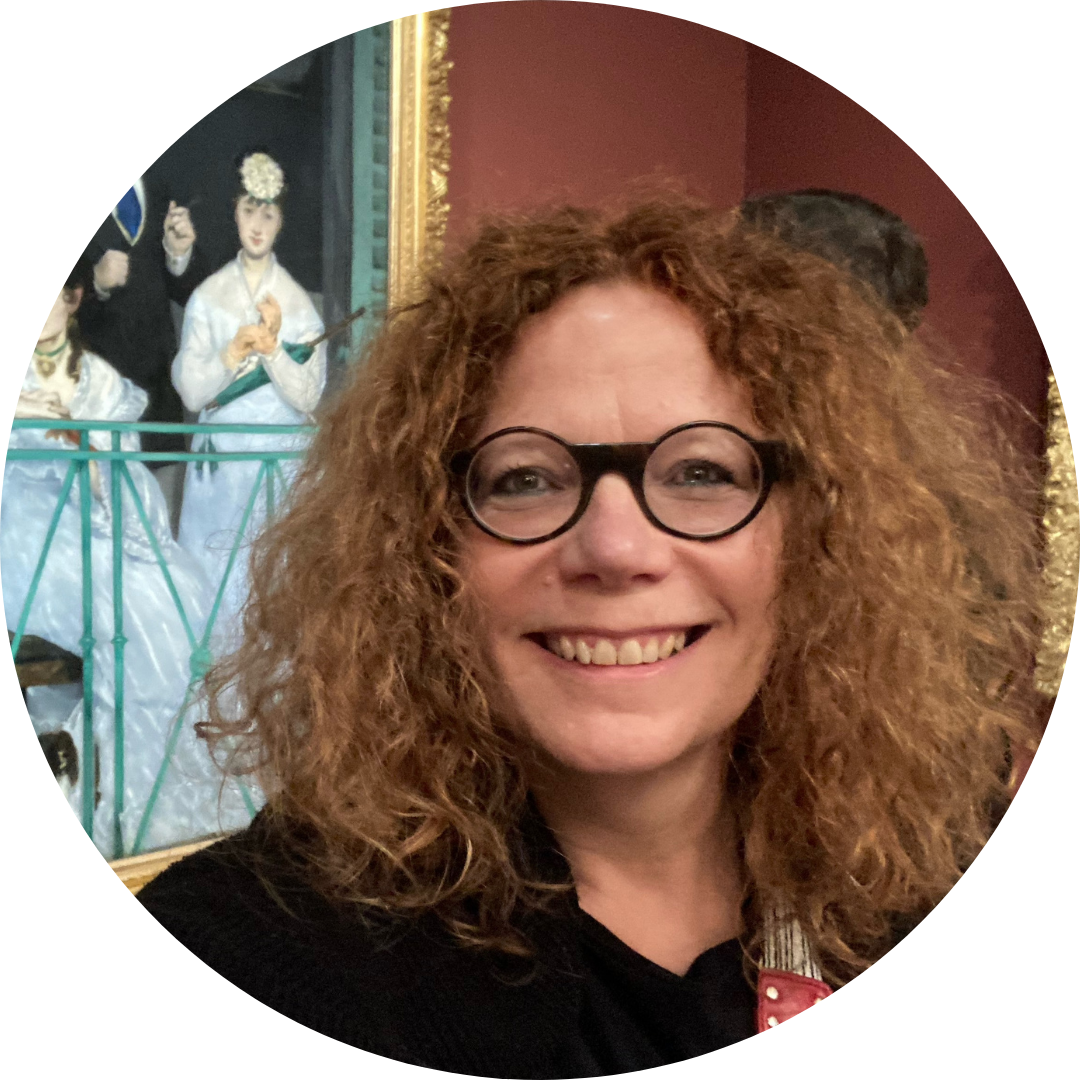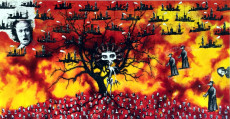
The tragi-comic work of Philip Guston

About the "Philip Guston Now" exhibition, on view until 25 February 2024 at the Tate Modern in London.
Philip Guston (1913-1980) will never be the end of the outcry! A leading figure in Abstract Expressionism, for a long time close to Jackson Pollock, Willem De Kooning and Mark Rothko, the American artist finally turned to figurative painting at the end of the 1960s, having been marked very early on by experiences of censorship of the political content of his works, has still managed, beyond his death, to scare American museums. So much so that they have postponed the retrospective exhibition they wanted to devote to him in 2020, "for fear of shocking people".
An information sheet entitled "Emotional preparation for the Philip Guston retrospective" is now being handed out at the entrance to the exhibition, which is finally being held at Tate Modern in London, after having been completely rethought by the curators with the help of eminent trauma specialists, who were consulted to find out what the uninitiated absolutely had to know before coming face to face with Philip Guston's paintings. For example, visitors can choose not to see everything, to open or close the display cases containing certain works, and so on. The official object of the 'crime'? The famous "bonnets". This Ku Klux Klan imagery, which the artist used in a series of paintings to denounce the exactions of the supremacist organisation and racial hatred, going so far as to paint a self-portrait in a balaclava painting a self-portrait in a balaclava... could, it seems, have made him look like a racist character. This would obviously have been risky in 2020, when the Black Live Matters social movement was particularly active and gaining international momentum following the murder of George Floyd, the African-American man killed by a policeman.
"Cigars in mouths, at the wheel of a car criss-crossing deserted streets, or even in front of a school blackboard, can these figures, both chilling and good-natured, still be misunderstood? asks Judicaël Lavrador in his article in the December 2023 issue of Beaux Arts Magazine. Personally, I doubt it.
Quite apart from the demonstrations and riots that could eventually have been perpetrated around Guston's grotesque hooded figures, in the event of their misappropriation being misunderstood by the Afro-American political movement campaigning against systemic racism against black people, the directors of the museums in Washington, Boston and Houston have above all found themselves obliged, in my humble opinion, to be better prepared for today's crucial question: what right does a white person have to denounce the atrocities of the KKK and racial hatred? Wouldn't it be more like a white man having fun with the imaginary Ku Klux Klan attacking black people?
Of course, the question of cultural appropriation is essential. But in the early 1930s, when Philip Guston was a young painter belonging to a group of far-left underground artists in California, he himself experienced the violence of the KKK. Traumatised by the death sentence passed on a group of young black men accused without proof of raping a white woman, he made it the subject of a mural for a communist club, depicting a KKK member whipping an African-American. The wall was immediately riddled with bullets by police officers close to the supremacist organisation. It was Philip Guston's first 'bonnet'. And he would never stop using it to revolt in his own way against the violence of the world, except during the fifteen or so years he devoted to abstraction. In 1934, Guston and two of his friends were commissioned to paint a monumental fresco for a palace in Morelia, Mexico, now a museum. This painting, dedicated to "workers fighting for freedom" in the struggle against war and fascism, symbolises the apocalyptic horror and brutality of dictatorships, the Inquisition and the Ku Klux Klan.
In the end, it seems to me that it is just as essential for an artist to be respectful of the experiences of others as it is to want to reflect on these experiences, to want to create images relating to the suffering of others. What Philip Guston is looking for is more than a painting.
Basically, I think this exhibition is a wonderful example of what we now call an 'alliance with oppressed groups'. Philip Guston has always given pictorial expression to his desire to reflect on the unjust suffering of human beings, of all human beings, be they black, migrants or deportees. And not just by drawing or painting balaclavas. Shoes, for example, are also a recurring, even emblematic motif in his work. Their presence can be explained both by the photographs of the Holocaust that haunted the artist, and by the meagre belongings carried by the migrants. He himself came from a family that had emigrated from what is now Ukraine to Canada, where he was born Goldstein in 1913. He turned these mountains of soles into strange drawings that deliberately oscillated between tragedy and comedy. Just after painting in the vein of Giorgio De Chirico, whom he adored, and just before finding his own path in abstraction at the end of the 1940s.
The Shoah, Hiroshima, the Second World War... it became clear to Guston that the whole world was destroying itself. He followed his desire to express his inner self in paint. In his studio, amidst hundreds of tubes of cadmium red, mars black and titanium white, he painted chaos. And even if it was with abstraction that he finally managed to make a decent living from his painting, his works of art being sold from 1955 on the contemporary art market by the Sidney Janis art gallery in New York, renowned for having exhibited the most famous abstract expressionists and enabling him to follow up with exhibitions at MoMa, Documenta, the Venice Biennale, the Guggenheim... Guston suddenly started painting objects again in 1967. Hundreds of books, to start with. "Everyone who creates something knows that at some point a third hand comes into play," he says.
Against the backdrop of the brutal repression of anti-Vietnam War riots in the midst of the 1968 US Democratic Party convention, the painter thought back to the 1930s. He was reminded of the Ku Klux Klan bonnets. "Sometimes in life you have to start all over again. In my case, it was a real reversal. To better explore evil, Guston's paintings remained figurative until his death. "I want to tell stories", he used to say to those who couldn't understand why he was abandoning the golden goose of American Expressionism. The Malborough art gallery exhibited his work at the end of the 1960s. There he met David and Renée McKee. It was love at first sight: from then on, he would entrust his works of art for sale to this couple of gallery owners. And he was right.
He who has so often doubted, he who has searched so hard, he who has changed his "painting style" all his life to the point of no longer being able to fit into the juicy boxes of the art market, of being repudiated by the New York School, of losing his Abstract Expressionist friends? He had no interest in painting works of art that would sell, since he could only paint works of art that were vital... and now he has reached monstrous heights and is causing a flood of ink to flow. His paintings can sell for millions of dollars, and this is something that would have made no sense to him when he was alive, something that would have appalled him, even. Admittedly, he was unhappy when no one understood the power of his figurative painting, and he had appreciated the fact that he had experienced the highs before the lows, so that he could get by economically without ever stopping painting or drawing. But when he attended the opening of the major exhibition devoted to him in San Francisco, just before his death, it was the emotion of finally seeing his last paintings reunited in all their incredible force on the museum's walls that rewarded him for his life of tortured labour. Certainly not their market value. Still less the offended reactions of some to this strange black humour, this tragi-comic painting so close to the comic books he had loved so much. At the age of 13, Philip Guston won a cartoon competition in a teen magazine. His father had committed suicide three years earlier, and his brother had just died in a car accident.
 Article written by Valibri en Roulotte
Article written by Valibri en Roulotte
Illustration : Philip Guston The Line 1978 Promised gift of Musa Guston Mayer to The Metropolitan Museum of Art, New York © The Estate of Philip Guston, courtesy Hauser & Wirth





































































